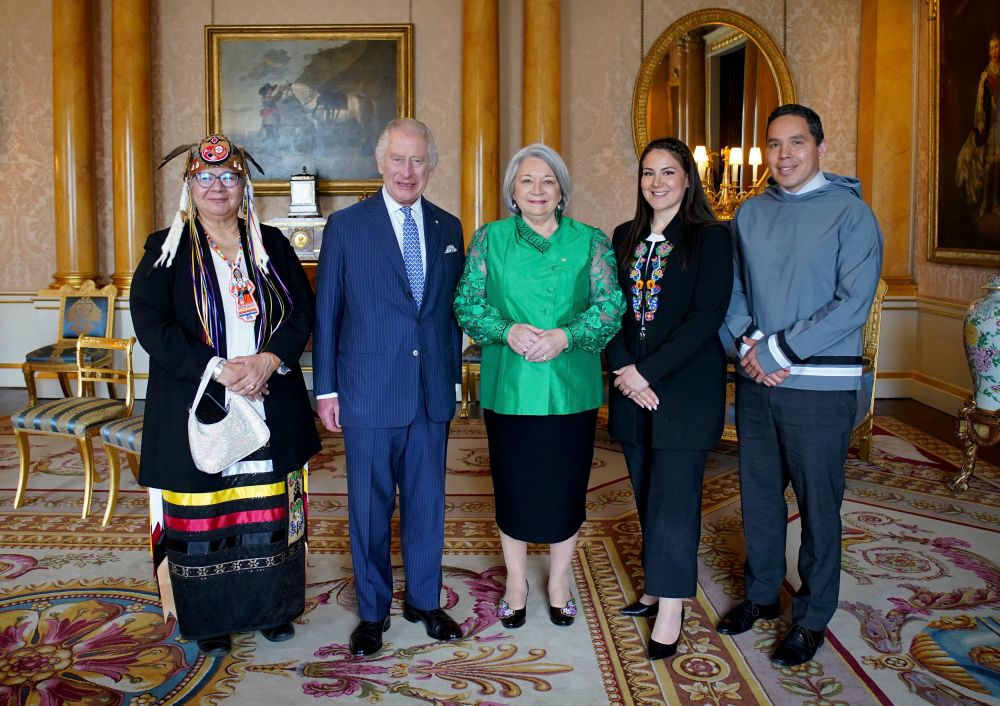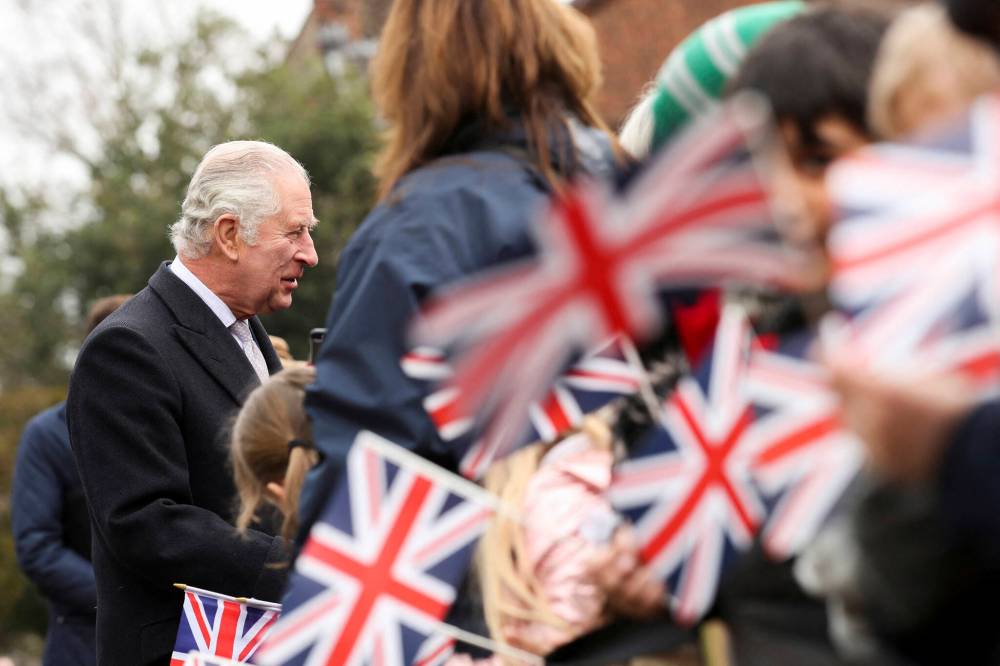Coronation of new Big Boss a moment of — cautious — optimism for Indigenous peoples
Read this article for free:
or
Already have an account? Log in here »
To continue reading, please subscribe:
Monthly Digital Subscription
$0 for the first 4 weeks*
- Enjoy unlimited reading on winnipegfreepress.com
- Read the E-Edition, our digital replica newspaper
- Access News Break, our award-winning app
- Play interactive puzzles
*No charge for 4 weeks then price increases to the regular rate of $19.00 plus GST every four weeks. Offer available to new and qualified returning subscribers only. Cancel any time.
Monthly Digital Subscription
$4.75/week*
- Enjoy unlimited reading on winnipegfreepress.com
- Read the E-Edition, our digital replica newspaper
- Access News Break, our award-winning app
- Play interactive puzzles
*Billed as $19 plus GST every four weeks. Cancel any time.
To continue reading, please subscribe:
Add Free Press access to your Brandon Sun subscription for only an additional
$1 for the first 4 weeks*
*Your next subscription payment will increase by $1.00 and you will be charged $16.99 plus GST for four weeks. After four weeks, your payment will increase to $23.99 plus GST every four weeks.
Read unlimited articles for free today:
or
Already have an account? Log in here »
Hey there, time traveller!
This article was published 04/05/2023 (949 days ago), so information in it may no longer be current.
Ten years ago, while on a speaking tour of England, I spent a day at the British Museum.
It’s impossible to be Indigenous and not be traumatized when you go there.
A great deal of the collection is made up of sacred items and human remains stolen from Indigenous communities across the world. Some are described as “purchased” by British representatives or “traded for,” but many more are brazenly labelled “stolen” or, simply, “taken.”
Some have no origin story to explain how they got there.
The British Museum was established by King George II in 1753 — 10 years before his grandson King George III claimed the lands now known as North America in the 1763 Royal Proclamation.
For the Crown, stealing Indigenous land and plundering Indigenous communities have always gone hand-in-hand. This is how the British Empire — more affectionately known today as the Commonwealth — was built.
For the Crown, stealing Indigenous land and plundering Indigenous communities have always gone hand-in-hand. This is how the British Empire, more affectionately known today as the Commonwealth, was built.
After King Charles is crowned Saturday, he can change this legacy.
Time will tell if he will, but a few signs of change were evident this week.
Charles met Thursday with Assembly of First Nations National Chief Roseanne Archibald, Métis National Council president Cassidy Caron, and Inuit Tapiritt Kanatami president Natan Obed to discuss treaties, reconciliation and how to “reset the relationship” between Indigenous and non-Indigenous peoples in Canada.
Considering the King has reserved this week just to speak with heads of state, a meeting with Indigenous leaders is significant. It’s a gesture towards recognizing that Indigenous nations are partners and not subjects, which is something treaties in Canada promised.
The meeting, facilitated by Gov. Gen. Mary Simon, also provided an opportunity to express to the King several long-standing concerns Indigenous communities have with the monarchy, something Charles himself has admitted requires attention.

“I want to acknowledge that the roots of our contemporary association run deep in the most painful period of our history,” Charles told a gathering of the Commonwealth in Rwanda last June. “If we are to forge a common future that benefits all our citizens, we too must find new ways to acknowledge our past. Quite simply, this is a conversation whose time has come.”
At the same time that Archibald, Caron, and Obed were meeting with Charles, other Indigenous leaders from a dozen Commonwealth countries issued an open letter demanding a formal royal apology for British colonialism, the return of sacred artifacts and human remains, and a mass redistribution of wealth stolen by the British Crown.
“We, the undersigned, call on the British Monarch, King Charles III,” the statement says, “to acknowledge the horrific impacts on and legacy of genocide and colonisation of the Indigenous and enslaved peoples.”
Signed by representatives from Antigua and Barbuda, Aotearoa (New Zealand), Australia, the Bahamas, Belize, Canada, Grenada, Jamaica, Papua New Guinea, Saint Kitts and Nevis, Saint Lucia and Saint Vincent and the Grenadines, the letter calls for reparations due to the “the oppression of our peoples, plundering of our resources, denigration of our culture and to redistribute the wealth that underpins the Crown back to the peoples from whom it was stolen.”
Obviously, King Charles can’t fix colonialism in a weekend, but the prospect of an apology and the return of sacred objects and human remains is looking increasingly possible.
Charles has already acknowledged slavery and violence, including residential schools within the British Empire. “Sorry” is really the only thing he could say next.
Ordering the return of Indigenous sacred items and remains also seems inevitable.
While the British Museum is somewhat resistant, museums throughout England have been slowly returning that property to Indigenous communities around the globe for quite some time.
Sharing wealth and land and revoking the Crown’s claim under the Royal Proclamation seems impossible, but — since it’s really only state governments that can tangibly deliver these things — who knows?
CHRIS RADBURN / POOL PHOTO via THE ASSOCIATED PRESS Obviously, King Charles can’t fix colonialism in a weekend, but the prospect of an apology and the return of sacred objects and human remains is looking increasingly possible.
All change requires leadership. Does the new King have it?
By the end of their meeting, Archibald, Caron and Obed all remarked it was “positive” and collectively invited Charles to visit Indigenous communities in Canada.
It wasn’t just a gesture, though; Indigenous leaders know that every time Charles has paid a visit to Indigenous communities he has left with more than he arrived with.
In 2022, he attended a residential school survivors gathering and spent time with Inuit elders — remarking that he was moved by Indigenous experiences and knowledge.
As a result of visits before that, his “Prince’s Charities Canada” program has helped fund Indigenous-language revitalization, educational programs and food security.
Charles has even earned some Indigenous names, one of the highest honours a community can bestow.
Charles has even earned some Indigenous names, one of the highest honours a community can bestow.
In Blackfoot he is called Mekaisto (“Red Crow”).
In Cree he is called Kīsikāwipīsimwa miyo ōhcikanawāpamik (“The Sun Watches Over Him in a Good Way”).
In Inuktitut he is called Attaniout Ikeneego (“Son of the Big Boss”).
He is the Big Boss now, though.
The question is, does he have the will to live up to his name?
niigaan.sinclair@freepress.mb.ca

Niigaan Sinclair is Anishinaabe and is a columnist at the Winnipeg Free Press.
Our newsroom depends on a growing audience of readers to power our journalism. If you are not a paid reader, please consider becoming a subscriber.
Our newsroom depends on its audience of readers to power our journalism. Thank you for your support.

















